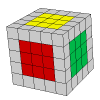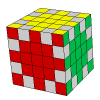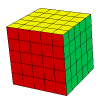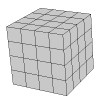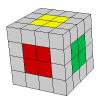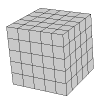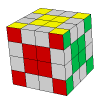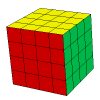Milan Method
This method was originally suggested by Milán Baticz, who thought it might be good for the 4x4x4. Nobody ever got close to the 4x4x4 record times with it, but it's fun to use for both the 4x4x4 and 5x5x5.
Simply solve all the centers. I suggest doing two opposite ones first (one by one, generally), and then solving the four remaining ones so that you finish with two adjacent centers. If you need more help, look up a Reduction tutorial, since this step is identical to the first step of Reduction.
Solve the corners and middle edges, by only turning the outer layers. The idea here is to treat the centers like the centers of a 3x3x3, and solve other pieces around it. Use your favorite 3x3x3 method to do this.
Keep in mind, on 5x5x5 it's obvious how to do this, because all the pieces on a 3x3x3 are there, and the only difficulty is recognition. The 4x4x4 is a bit trickier, because there are generally very few paired edges. Although you could just solve the corners like a 2x2x2, the edges step will take about 4 moves for each edge, so it's worth it to try to get as many of them solved as you can. Try to get one of the two edge pieces solved in as many groups as possible (or two for some groups that happen to be paired).
This is the really fun and tricky step: solve all edges with commutators. If you're not already familiar with commutators, they are a type of formalized and intuitive algorithm that can be used to move only 3 pieces at once around the cube. The official website for the last step of Thom Barlow's K4 provides a lot of examples, which can be adapted for this step, and there are also some good tutorials on YouTube about how to create your own. Except for parity algorithms (which are also on the K4 page) there is really no memorization here - everything can be understood in detail, move by move.
